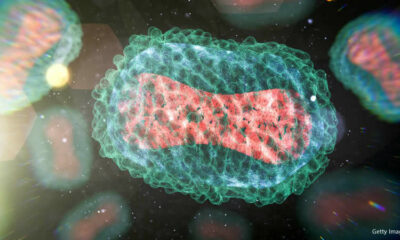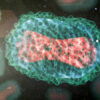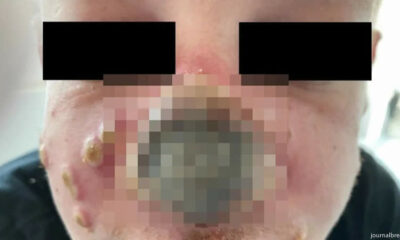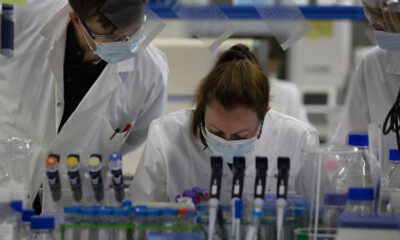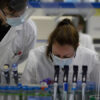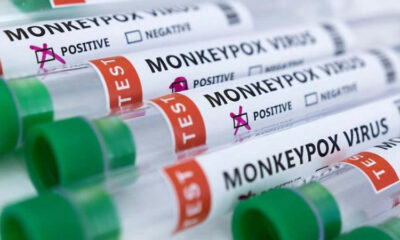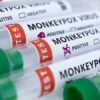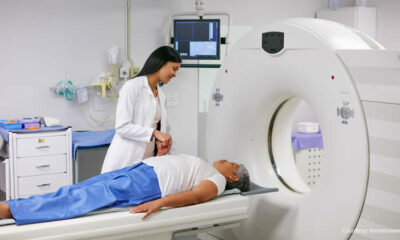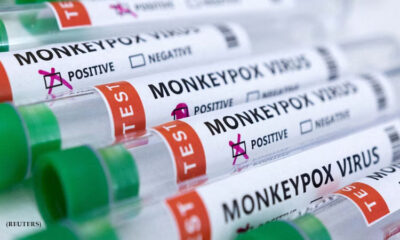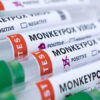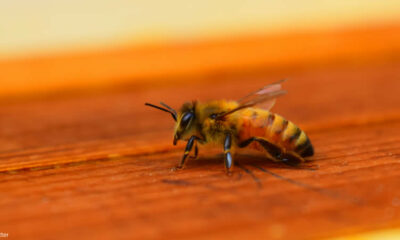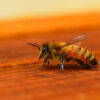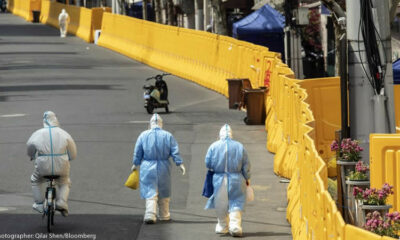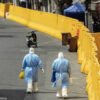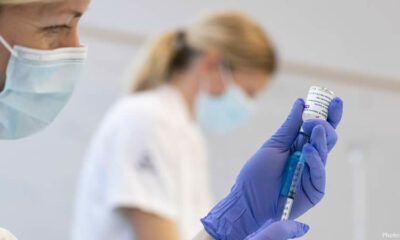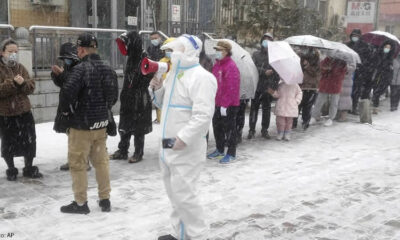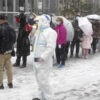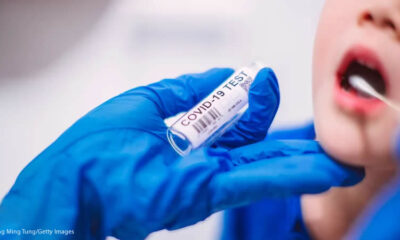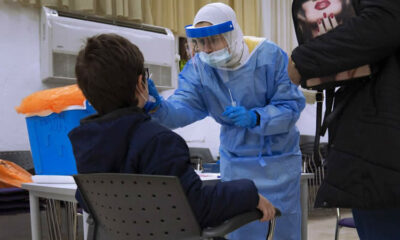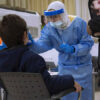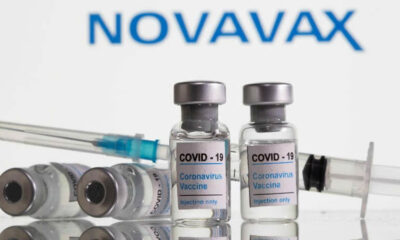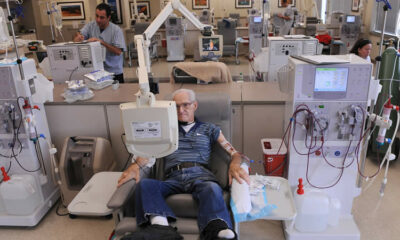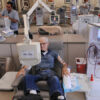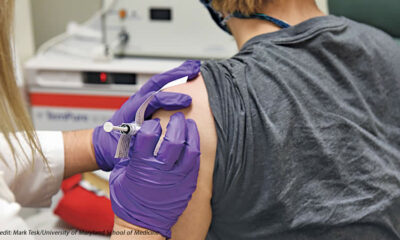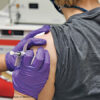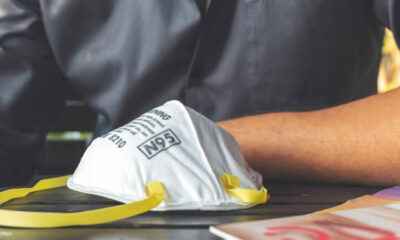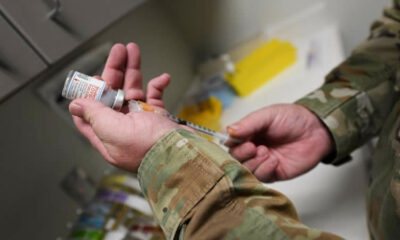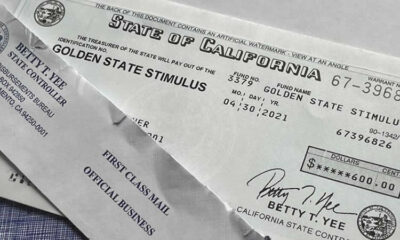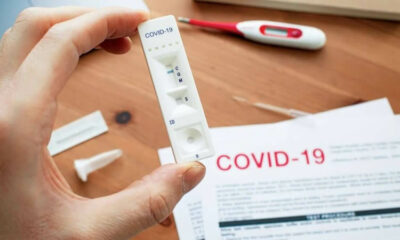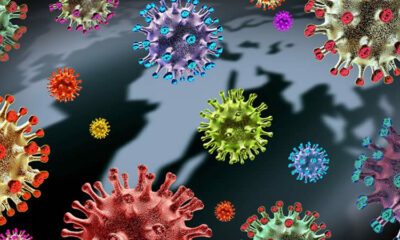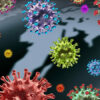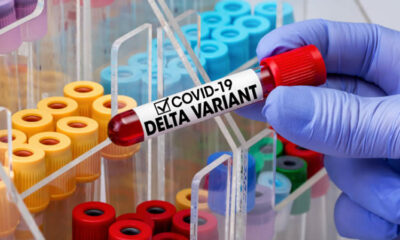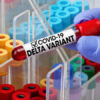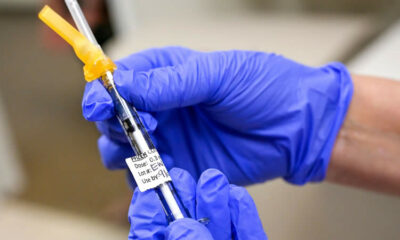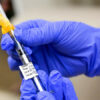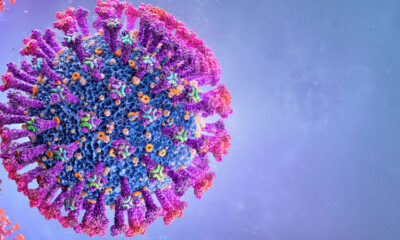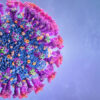Fitness
10 reasons why scientists think the coronavirus originated in the laboratory in Wuhan, China
Shortly after the coronavirus outbreak, influential scientists huddled to declare that the deadly virus most likely originated naturally from an animal transfer to humans.
According to new reporting from Fox News’ “Special Report,” Dr. Anthony Fauci, director of the National Institute of Allergy and Infectious Diseases, then-National Institutes of Health Director Francis Collins, and other scientists attempted to avoid mentioning the possibility that the virus originated in a lab. In early 2020, it was agreed that the lab leak theory should be excluded from an early paper on the origins of COVID-19 because it would “fuel the conspiracists.”
Two years later, there is still no conclusive evidence that the virus originated in nature or leaked from a lab. However, the theory that the virus originated at the Wuhan Institute of Virology, which studies coronaviruses, is no longer dismissed as a conspiracy theory and is gaining traction among scientific communities calling for further inquiry.
Fox News talked with several scientists and investigators who have studied the origins of COVID-19, and here are some of the science-based and circumstantial reasons why they believe the global pandemic originated in a Wuhan lab, possibly from a researcher accidentally becoming infected during a coronavirus experiment and spreading it into the community.
“When you evaluate the two theories, it is so overwhelmingly in favor of the lab leak that everything else is just incidental evidence about the details of what happened,” said Richard Muller, emeritus professor of physics at the University of California Berkeley, who has been a strong advocate for the lab-leak theory.
Scientists are divided on the virus’s origins, and the US intelligence community is equally divided on what triggered the global pandemic, which has killed more than 5.7 million people worldwide.
According to the natural origin theory, the novel coronavirus, or SARS-CoV-2, would have originated in an animal and transmitted to humans either directly or indirectly via an intermediate host animal.
This type of natural spillover has happened before. For example, the first Severe Acute Respiratory Syndrome (SARS) outbreak in 2003 was traced back to bat caves in China’s Yunnan province, with masked palm civets testing positive for the virus as the likely intermediary host animals.
The problem with reaching the same conclusion about COVID-19 is that no animal has tested positive for the novel coronavirus that caused the global pandemic.
It’s not for lack of attempting. Researchers tested over 80,000 animals in China, including hundreds linked to the Huanan seafood market linked to early cases of COVID-19, but “no positive result for SARS-CoV-2 was identified,” according to a World Health Organization (WHO) study on the origins of COVID-19.
“They tested an unprecedented 80,000 animals covering 209 species, including wild, domestic, and market animals … and they found no infections in animals,” Muller, the professor emeritus, told Fox News Digital.
“They found nothing. But instead of drawing a scientific conclusion from that, the World Health Organization came up with excuses.”
According to a controversial World Health Organization (WHO) study on the origins of COVID-19, the most likely scenario is a transmission from bats to an unknown host animal to humans, with the lab leak being “extremely unlikely.” However, the WHO has backed down and admitted that it was too quick to dismiss the lab theory, and has revived its investigation.
During past coronavirus epidemics, such as SARS in 2003 and MERS in 2013, there was evidence of increased human infection from animals before the virus mutated and became transmissible between humans, sparking the pandemic, Muller said.
According to Muller, who cited data from the WHO report, researchers tested over 9,000 human biological samples – including blood, plasma, and throat swabs – that were stored at hospitals and blood banks prior to the pandemic.
Based on past SARS and MERS outbreaks, Muller predicted that between 100 and 400 people would test positive for SARS-CoV-2. However, in this case, no one tested positive.
“There is no evidence of multiple animal-to-human transmissions,” said Dr. Steven Quay, a physician and founder of Atossa Therapeutics.
Muller and Quay collaborated on the study of coronavirus origins and presented their findings to Congress as well as in a Wall Street Journal op-ed.
The lack of evidence of pre-pandemic infection and the virus’s genetic purity suggest that COVID-19 was not a natural spillover from animals, but rather a lab-acquired infection, according to the researchers.
SARS-CoV-2 has a unique trigger on its surface called a furin cleavage site and a unique code in its genes for that site called a CGG-CGG dimer, according to Quay, who is writing a book on why COVID-19 originated in a lab. This combination has never been found naturally, so it must be a lab-created virus, he claims.
“These gene jockeys have put in a furin site into a virus that didn’t have one in the laboratory,” Quay told Fox News Digital. “Eleven out of 11 times it makes it more effective, more transmissible, more lethal — all the bad things you’d want. So if you want to juice up a virus and make it more infective or make it go from bats to humans, putting in a furin cleavage site is a great idea.”
Scientists disagree on whether the CGG sequences in the furin cleavage site indicate that the virus was created in a lab. Such arguments, according to Kristian Andersen, a virologist at the Scripps Research Institute in California, are “factually incorrect.”
Based on the experiences of SARS1 and MERS, when the virus becomes capable of human-to-human transmission, it takes weeks for the virus to evolve as it spreads through the population, with the most contagious forms of the virus dominating. However, in the case of COVID-19, the virus was pre-adapted for human-to-human transmission from the first patient, according to Quay. He claimed that the part of the virus that interacts with human cells was 99.5% optimized.
“Such early optimization is unprecedented, and it suggests a long period of adaptation that predated its public spread,” Quay and Muller wrote in an op-ed in the Wall Street Journal about their findings. “Science knows of only one way that could be achieved: simulated natural evolution, growing the virus on human cells until the optimum is achieved.”
Quay believes the COVID-19 virus was taught to infect humans in the lab via gain-of-function research on “humanized mice” that are repeatedly exposed to the virus to encourage adaptation.
Other research contradicts the notion that the SARS-CoV-2 spike protein was designed to bind to human ACE2 upon its emergence.
In China, the Wuhan Institute of Virology investigates bat coronaviruses and their potential to infect humans. According to the State Department, it has also conducted “gain of function” experiments, so it was natural to wonder if a bat-related coronavirus outbreak in Wuhan was caused by the lab.
“Every informed person, every person in the field of virology, every person in the field of biosafety and biosecurity in January was thinking lab release,” Richard Ebright, a professor of chemistry and chemical biology at Rutgers University, told Fox News Digital.
Prior to the pandemic, the Wuhan Institute of Virology was one of only three places in the world conducting gain-of-function research and potential pandemic pathogen enhancement research on SARS-related coronaviruses, according to Ebright. He stated the University of North Carolina Chapel Hill and the University of Texas Medical Branch in Galveston as the other two.
Gain-of-function research involves extracting viruses from animals and artificially engineering them in a laboratory to make them more transmissible and deadly to humans. The purpose of this type of research is to allow scientists to stay ahead of the curve when developing treatments for certain infectious diseases.
However, such research is controversial – and was subject to a funding moratorium in the United States in 2014 under the Obama administration – due to concerns that the risks of creating more dangerous pathogens outweighed the benefit of the plan for future outbreaks. With new guidelines, the federal funding ban was lifted in 2017.
According to a paper published in 2015, scientists from the Wuhan Institute of Virology and the University of North Carolina at Chapel Hill teamed up on an experiment that produced a hybrid version of a bat coronavirus related to the virus that causes SARS.
The scientists stated in 2015 that the work was already underway before the “gain of function” moratorium was imposed, and the US National Institutes of Health (NIH) later determined the work was completed.
The researchers created a chimeric virus by combining a surface protein from the SHC014 virus found in Chinese horseshoe bats with the backbone of a SARS virus that had been adapted to grow in mice and mimic human disease.
At the time, Ebright raised concerns about the experiment and the risk of causing a new lab-created outbreak.
So, four years later, when news of a COVID-19 outbreak in Wuhan broke, Ebright remembered the risky research in Wuhan that had already been flagged as a potential pandemic threat.
“This was not merely a possibility,” Ebright said of a lab leak. “It had been predicted.”
China has insisted that the virus did not originate in a laboratory. Shi Zhengli, who leads the Wuhan Institute of Virology’s bat coronavirus research team, has stated that the genetic sequence of the new coronavirus does not match any of the viruses her team had sampled from Chinese bat caves.
However, China has obstructed an independent investigation, denying investigators complete access and independence and withholding data from the outbreak’s early days. According to the State Department, the WIV “has not been transparent” about its record of studying viruses most similar to the COVID-19 virus, including “RaTG13,” which is sampled from a cave in Yunnan Province in 2013 after several miners died of SARS-like illness.

The bat virus databases that are managed by the Wuhan Institute of Virology have gone offline, hidden from scrutiny.
Meanwhile, according to NIH and congressional investigators, the lab’s US partner, EcoHealth Alliance, has been less than forthcoming about what was going on at the Wuhan lab. According to a House Republican aide involved in a congressional investigation into the origins of COVID-19, EcoHealth Alliance has received $117 million in taxpayer dollars, including a $600,000 NIH grant to study the risk of bat coronavirus emergence, which was then subgranted to the Wuhan lab.
In October, the Washington Post editorial board called on EcoHealth Alliance President Peter Daszak to testify before Congress about the origins of COVID-19, following revelations that, despite repeated denials, the National Institutes of Health-funded so-called “gain of function” coronavirus research in Wuhan via Daszak’s nonprofit.
While China is refusing to cooperate, investigators believe the US already has the insight into the Wuhan Institute of Virology’s research activities through grant-making organizations and EcoHealth Alliance records, and that those documents should be made public.
Researchers working on viruses in laboratories have previously become infected by accident, causing virus outbreaks in China and elsewhere. In 2004, for example, a lab-leak SARS outbreak in Beijing infected nine people, killing the mother of an infected graduate student at China’s National Institute of Virology Laboratory. The lab was conducting SARS coronavirus research (SARS-CoV).
In 2003, a scientist at Taiwan’s National Defense University in Taipei became infected with the severe acute respiratory syndrome (SARS) while researching it in the lab. A laboratory fault was also to blame for a SARS infection in Singapore in 2003 when a doctoral student at the Singapore General Hospital became sick.
“These viruses are always waiting to infect you,” Quay said of lab research. “You only have to make a mistake for five minutes after a 20-year career and, you know, you’ve got it.”
The State Department revealed in January 2021 that the “U.S. government has reason to believe that several researchers inside the WIV became sick in autumn 2019, before the first identified case of the outbreak, with symptoms consistent with both COVID-19 and common seasonal illnesses.”
“This raises questions about the credibility of WIV senior researcher Shi Zhengli’s public claim that there was ‘zero infection’ among the WIV’s staff and students of SARS-CoV-2 or SARS-related viruses,” according to the State Department report released in the final days of the Trump Administration.
In May, the Wall Street Journal published a more detailed U.S. intelligence report. According to the report, three researchers from the Wuhan Institute of Virology became sick enough to seek hospital treatment in November 2019.
On January 15, 2021, the US State Department revealed that the Wuhan Institute of Virology had collaborated on “secret projects” with China’s military and warned that the country has a history of biological weapons work that Beijing has not “demonstrably eliminated.”
“The WIV has engaged in classified research, including laboratory animal experiments, on behalf of the Chinese military since at least 2017,” the State Department fact sheet states. “The United States and other donors who funded or collaborated on civilian research at the WIV have a right and obligation to determine whether any of our research funding was diverted to secret Chinese military projects at the WIV.”
Quay, who testified during a congressional hearing, said the COVID-19 virus shows strong signs of academic gain-of-function research and “hints” of some never-seen-before features that would be more consistent with “creating a bioweapon.”
“You cannot draw a conclusion of that magnitude without knowing the minds of the people,” Quay told Fox News. “The difference between academic research and a bioweapon is in the minds of the person in the lab.”
Regardless, Quay believes any lab release was not purposeful. “There’s abundant evidence that this was an accident.”
Those who support the lab-leak theory have been frustrated by National Institutes of Health leaders, including Fauci, who pushed the natural origin theory from the start of the pandemic and repeatedly denied that the federal agency was funding gain-of-function research at the Wuhan Institute of Virology.
According to newly released documents, Fauci, the director of the National Institute of Allergy and Infectious Diseases, was warned early on that the virus could have originated in the Wuhan lab. Dr. Kristian Andersen, a well-known virologist at Scripps Lab, privately informed Fauci on January 31, 2020, that after discussions with his colleagues, some of COVID-19’s features appear to be engineered, and the “genome is inconsistent with expectations from evolutionary theory.”
In response, Fauci assembled a conference with dozens of virologists from around the world, and notes from the meeting obtained by Fox News’ “Special Report” reveal that suspicions of the lab leak theory were suppressed due to concerns about how the public would react to news of possible Chinese government involvement.
Andersen went on to co-author a highly influential paper in Nature Medicine on March 17, 2020, that stated the polar opposite of his initial concerns about a lab leak. “We do not believe that any type of laboratory-based scenario is plausible,” Andersen wrote in a widely cited paper that helped to establish a scientific consensus on the natural origin theory.
Andersen has stood by the natural origin theory and explained to the New York Times that he rejected the lab-leak origin theory after getting more information on the virus. He called the change of heart a “textbook example of the scientific method where a preliminary hypothesis is rejected in favor of a competing hypothesis after more data become available and analyses are completed.”
NIH continues to insist that its grant funding to EcoAlliance that was then sub-awarded to the Wuhan Institute of Virology did not meet its definition of “gain of function” research. NIH says the genomic data of the bat coronaviruses studied under the federal grant demonstrates they “are not and could not have become SARS-CoV-2.”
However, critics believe the leading scientists had a professional interest in avoiding a backlash over gain-of-function research and inviting further scrutiny into the possibility that a lab in Wuhan funded by the US may have been involved in manipulating coronaviruses that sparked a pandemic.
“There was an orchestrated effort at the start of 2020 to establish and enforce a false narrative about the origin,” Ebright, the Rutgers professor, told Fox News Digital. “Every informed person understood at the start of 2020, that there were two scenarios on the table that both required investigations.
“Those who had been involved in these high-risk research activities, and in particular, those who had funded these high-risk research activities through EcoHealth Alliance in Wuhan sought immediately to clamp down on the discussion and enforce the false narrative that science tells us the virus entered humans [through] natural spillover, and furthermore, that it is the consensus of scientists. Both of those statements were false.”
This article originally appeared on Yahoo and has been updated











